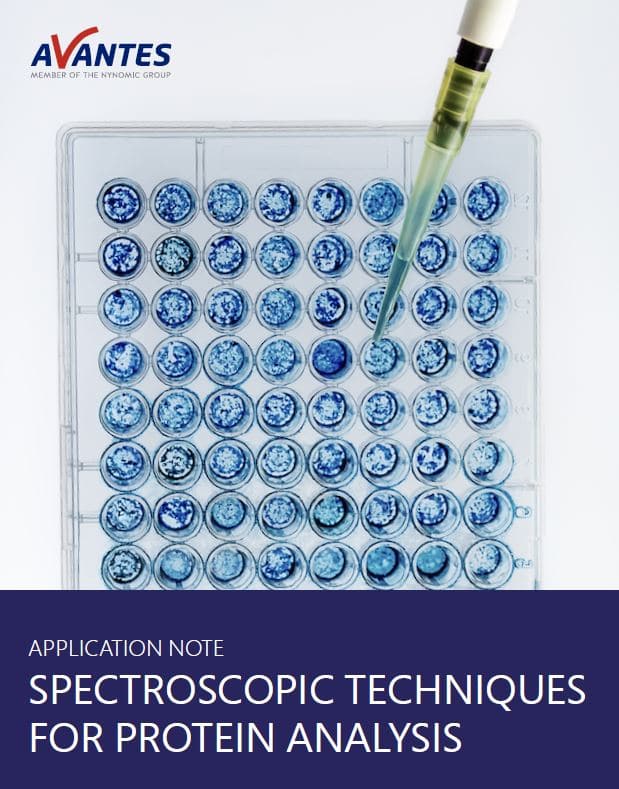Spectroscopic Techniques for Protein Analysis
 Quick and accurate quantification of protein content is critical for modern biology, biochemistry, and biophysics labs worldwide. Not only are researchers interested in detecting the total protein content, but they are also interested in protein classification/identification and proteomics. Although researchers have many tools at their disposal for understanding the complexities of protein, the cornerstone of any protein laboratory is absorbance and fluorescence spectroscopy. This application note will
Quick and accurate quantification of protein content is critical for modern biology, biochemistry, and biophysics labs worldwide. Not only are researchers interested in detecting the total protein content, but they are also interested in protein classification/identification and proteomics. Although researchers have many tools at their disposal for understanding the complexities of protein, the cornerstone of any protein laboratory is absorbance and fluorescence spectroscopy. This application note will
provide a high-level overview of the specific ways these spectroscopic techniques are utilized for protein analysis.
To demonstrate how powerful these techniques are for protein analysis we have decided to focus our attention on one particularly interesting classification of pronates known as albumin. Human serum albumin is the most common protein in the body. It is responsible for regulating osmotic pressure and plays a crucial role in maintaining overall blood pressure. Human serum albumin also serves as a carrier for a wide range of hydrophobic molecules like steroids in the bloodstream. In addition to the medical
importance of human serum albumin, bovine serum albumin (BSA) is also extremely important because of its wide range of uses in the lab. BSA is used in applications ranging from stabilizing enzymes and antibodies to preventing other proteins from adhering to the inner walls of microcentrifuge tubes. But the primary reason why BSA is so popular is its use as the standard by which all other proteins are measured.
 My Cart
My Cart 